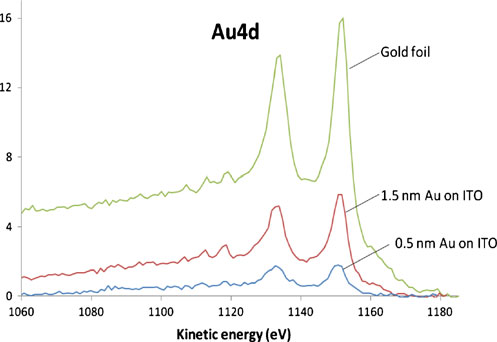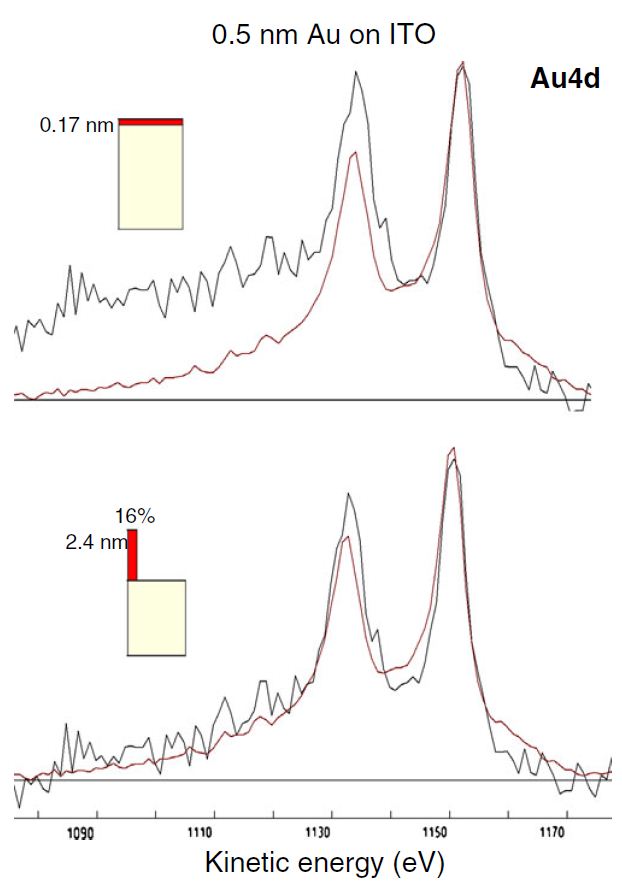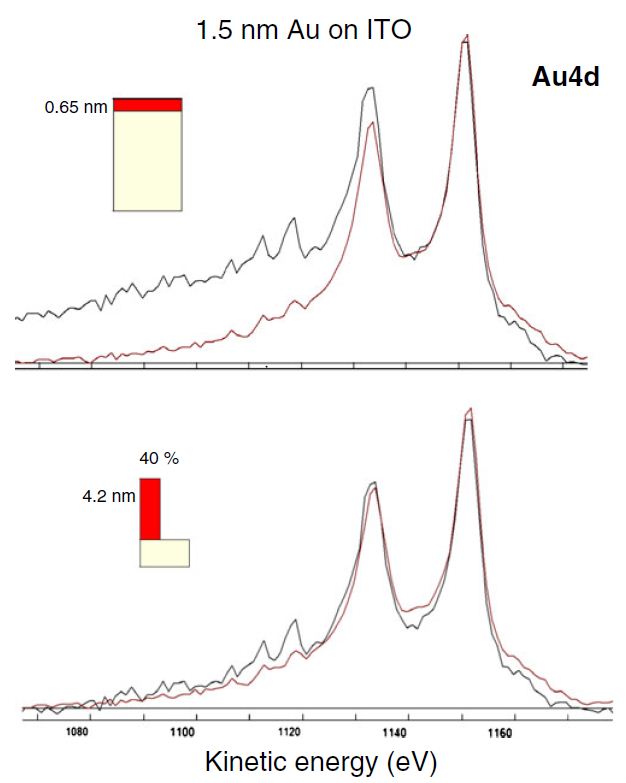|
QUASES-Tougaard |
Example of a recent practical application: Cattin et al. Gold Bull (2011) 44:199
Aim of the study
The efficiency of organic photovoltaic solar cells may be improved by introducing a thin gold film between the ITO electrode
and the organic substrate which gives rise to energy alignment between the transparent ITO electrode and the organic semi-conductors.
This study was undertaken to investigate the dependence on the nano-structure of the gold layer.
|
XPS-analysis Au4d spectra were taken after deposition of 0.5 and 1.5 nm of gold on ITO. The spectrum from the gold foil is used as a reference spectrum. The red spectrum in the lower two panels is the reference spectrum after it has been corrected for the inelastically scattered electrons. The structure of the gold layer is determined by comparing on an absolute scale with the corrected Au4d spectra of the Au-deposited samples. As can be seen, assuming a continuous layer 0.17 nm thick will fit at the peak energy but not at lower energies. A good match for the full spectral range is, however, obtained with respect to both intensity and shape with 16% coverage and 2.4-nm high nano-particles. For the nominal 1.5 nm Au deposit (lower right panel) the correct structure is 4.2 nm large nano-particles covering 40 % of the surface.
|
 |
|
| XPS of the Au4d energy region from a pure gold foil and from ITO films with nominally 0.5- and 1.5-nm deposited Au | ||
 |
 |
|
| With nominal 0.5 nm deposited gold, it is concluded that the golddoes not form a continuous layer but forms nano-particles of ~ 2.4 nm size. | With nominal 1.5 nm deposited gold, it is concluded that the gold does not form a continuous layer but forms nano-particles of ~ 2.4 nm size. | |
